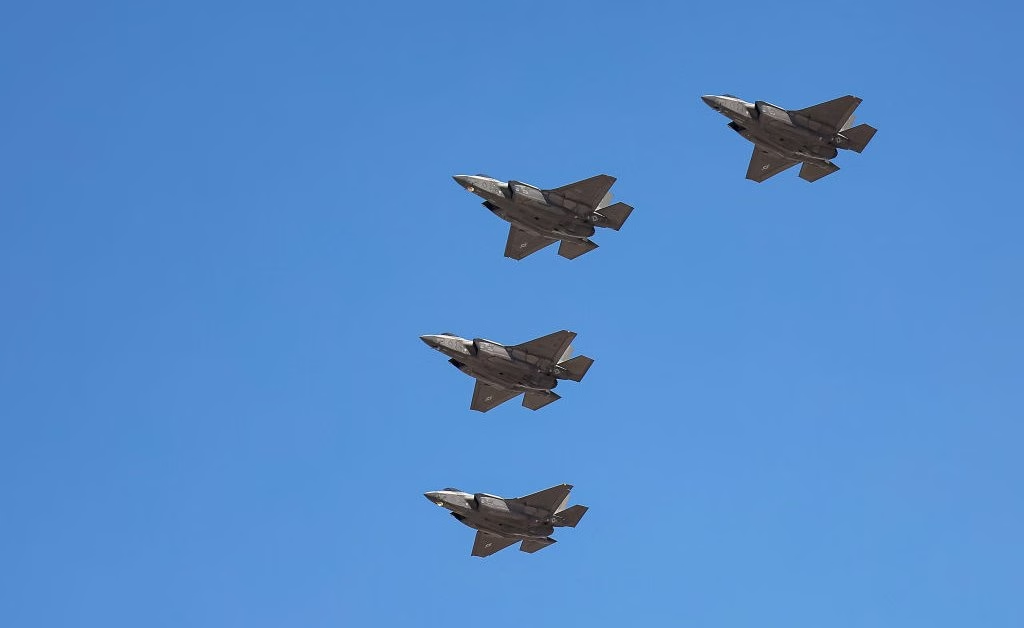B
ERPERLIN — Questions are rising in Canada and Europe regarding whether major investments in high-end U.S. weaponry, such as the F-35 Joint Strike Fighter, remain a sound strategic choice for Western countries concerned about their investments in U.S. defense technology.
In less than two months, U.S. President Donald Trump has overturned decades of U.S. foreign policy. He has left NATO members questioning whether the U.S. will honor the alliance’s commitment to defend each other if other European countries are attacked by Russia. He’s also made repeated overtures to Russia and suspended most U.S. foreign aid.
Trump’s defense secretary, Pete Hegseth, recently informed a gathering of European defense ministers that “stark strategic realities” hinder the U.S. from primarily focusing on Europe’s security.
This could impact foreign sales of the Lockheed Martin-produced F-35 and other advanced U.S. jets like the F-16. As the war in Ukraine enters its fourth year, eastern European NATO members still have substantial stores of Soviet-era weapons incompatible with Western weaponry. A long-term plan to standardize NATO on similar platforms—by replacing old Soviet-era jets with Western ones, particularly the F-16, and in some cases, the F-35—has gained momentum.
Some NATO countries are now reconsidering their reliance on U.S.-made systems and potentially exploring European jets such as the Saab Gripen, Eurofighter Typhoon, and Dassault Rafale instead.
An Unhappy F-35 Partner
In Canada, where Trump has initiated a trade war and threatened economic coercion to essentially make it the 51st American state, new Prime Minister Mark Carney has directed Defense Minister Bill Blair to review its F-35 purchase. Canada has been a partner with the U.S. in developing the F-35.
Blair will examine if there are any other options “given the changing environment,” a defense spokesman said.
Carney on Tuesday announced a radar purchase from Australia worth Canadian $6 billion ($4.2 billion). The deal includes early warning radar coverage from the Canada-United States border into the Arctic, and officials stated it would have a smaller footprint than a similar American system.
In Portugal, the outgoing defense minister told a Portuguese newspaper in an interview last week that “recent positions” by the U.S. compelled a reconsideration of the F-35 purchase due to the U.S. becoming unpredictable. Portugal is considering options for replacing its F-16s.
“When you’re purchasing an airplane, you’re also entering into a relationship with the United States,” said Winslow T. Wheeler, a long-time government watchdog who spent 30 years in the U.S. Congress dealing with national security and defense issues on behalf of both Democrats and Republicans. “In the past, people have not simply welcomed but also actively sought after such a relationship.”
The Netherlands and Norway have recently expressed support for the F-35 program in statements to the media.
“The F-35 is a crucial component of our national defense capabilities, and cooperation and dialogue with the United States continue to support the development and utilization of this high-end platform,” said Norwegian State Secretary Andreas Flåm in a statement. “We anticipate this constructive cooperation will continue in the future.”
The F-35 and a ‘kill switch’
The F-35 Joint Strike Fighter was engineered to fuse stealth, maneuverability, and attack capabilities in a single aircraft. Each jet costs approximately $85 million ($78 million euros), and the cost jumps to $100 million ($91 million euros) to $150 million ($137 million euros) when supporting infrastructure and spare parts are included. Roughly 1,100 jets have been produced to date for 16 global military services.
The F-35B, a variant that can vertically take off from ship decks, is the latest model. It is the most expensive weapons system the U.S. has produced, with estimated lifetime costs now anticipated to exceed $1.7 trillion. One way to offset these costs was by selling more aircraft to international customers.
However, the Trump administration’s recent halt on providing intelligence to Ukraine to compel negotiations with Russia has sparked fears that the U.S. may employ similar tactics to coerce other countries in the future—such as by embedding a hypothetical “kill switch” in the F-35’s millions of lines of programming.
In a statement, the Pentagon’s F-35 Lightning II Joint Program Office on Tuesday vehemently denied any notion that jets sold to allies could be remotely disabled.
“There is no kill switch. The F-35 was conceived, developed, and continues to be operated and sustained as a joint/coalition platform, built on strong partnerships with U.S. allies and partner nations across the globe,” the office stated. “The strength of the F-35 program lies in its global partnership, and we remain committed to providing all users with the full functionality and support they require.”
Wheeler also noted that besides disabling the jet themselves, the constant U.S.-controlled tech upgrades required for the F-35 to engage in combat could render a jet or even a fleet inoperable if relationships with the U.S. soured and updates were delayed.
Lockheed Martin states that they are committed to helping their customers “strengthen their airpower and security with the F-35.”
“As part of our contracts with governments, we provide all system infrastructure and data required for all F-35 customers to maintain the aircraft,” the defense contractor stated. “We remain dedicated to providing affordable and reliable maintenance services to our customers that enable them to accomplish their missions and return home safely.”
European Jet Alternatives
The Saab Gripen, Eurofighter Typhoon, and Dassault Rafale could witness increased sales if other countries decide to forgo their F-35 acquisitions. However, none possess the stealth capabilities of the F-35.
The Swedish-made Saab Gripen is utilized by the militaries of Sweden, the Czech Republic, Hungary, South Africa, Brazil, and Thailand. Conventional defense industry understanding posits it significantly cheaper than the F-35, Wheeler said.
The Eurofighter Typhoon, a swing-role combat aircraft, is part of the British, German, Spanish, and Italian forces. It is manufactured by a consortium of defense companies: Airbus, BAE Systems, and Leonardo.
The French-built Dassault Rafale twin-jet fighter is utilized by the French Navy and the French Air and Space Force. The governments of Egypt, India, Qatar, Greece, Croatia, the United Arab Emirates, Serbia, and Indonesia have all enacted contracts for Rafales.
David Jordan, a senior lecturer in defense studies at King’s College London and co-director of the Freeman Air and Space Institute, stated that European leaders once felt it was easier and more cost-effective to depend on the U.S. defense industry—and American taxpayers—to gain access to advanced weaponry. But, the Trump administration’s shift away from Europe could be the turning point, Jordan stated.
It would necessitate the continent to pool its funds and resources—a common point of contention among the countries—into research and development, manufacturing, and logistics. Still, Jordan maintained it’s feasible within a five to ten year period.
“The European defense industry is entirely capable of producing what it needs,” Jordan stated.
French President Emmanuel Macron is already intensifying his efforts to persuade France’s allies to switch to European defense contractors and weapon systems, including the French-built Rafale fighters.
“Those who purchase the F-35 should be offered the Rafale. That’s how we’ll accelerate the pace,” La Dépêche du Midi reported Macron as saying during a press briefing to journalists from regional French newspapers.
If Europe increases its production, it would substantially affect the bottom lines of Lockheed Martin and other U.S. defense companies. Jordan added that U.S. defense contractors are probably concerned about Trump’s next move.
“At what point will they say ‘this isn’t acceptable; we’re risking billions of dollars here,’” Jordan pondered.
The White House did not respond to a request for comment Tuesday.
—Copp reported from Washington. AP writers John Leicester in Paris and Danica Kirka in London contributed to this report.
Source: https://time.com/7269375/trump-nato-europe-canada-fighter-jets-defense-technology-made-america/








